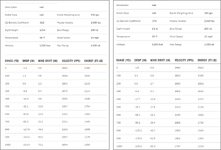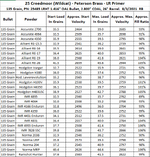amassi
WKR
- Joined
- May 26, 2018
- Messages
- 3,658
Making sure I'm tracking with you, a wind bracket is where Xmph crosswind equates to a .1 hold at 100, .3 at 300, etc?
Correct
How many shooting situations have you had where the extra 1-3 mph bracket was necessary ?
Likewise if your capable of holding .7 mil, are you not capable of holding 1 mil?
Sent from my iPhone using Tapatalk




